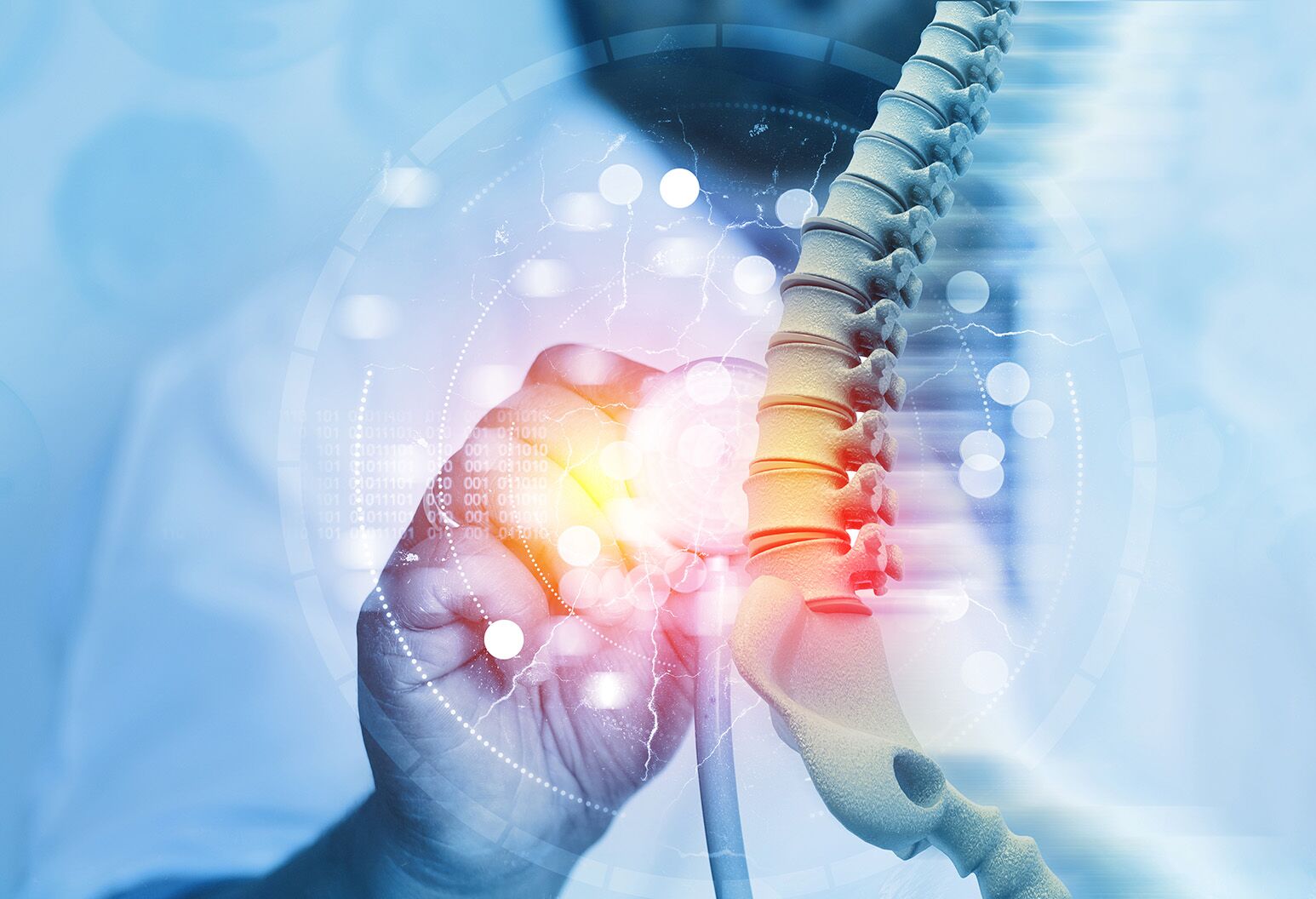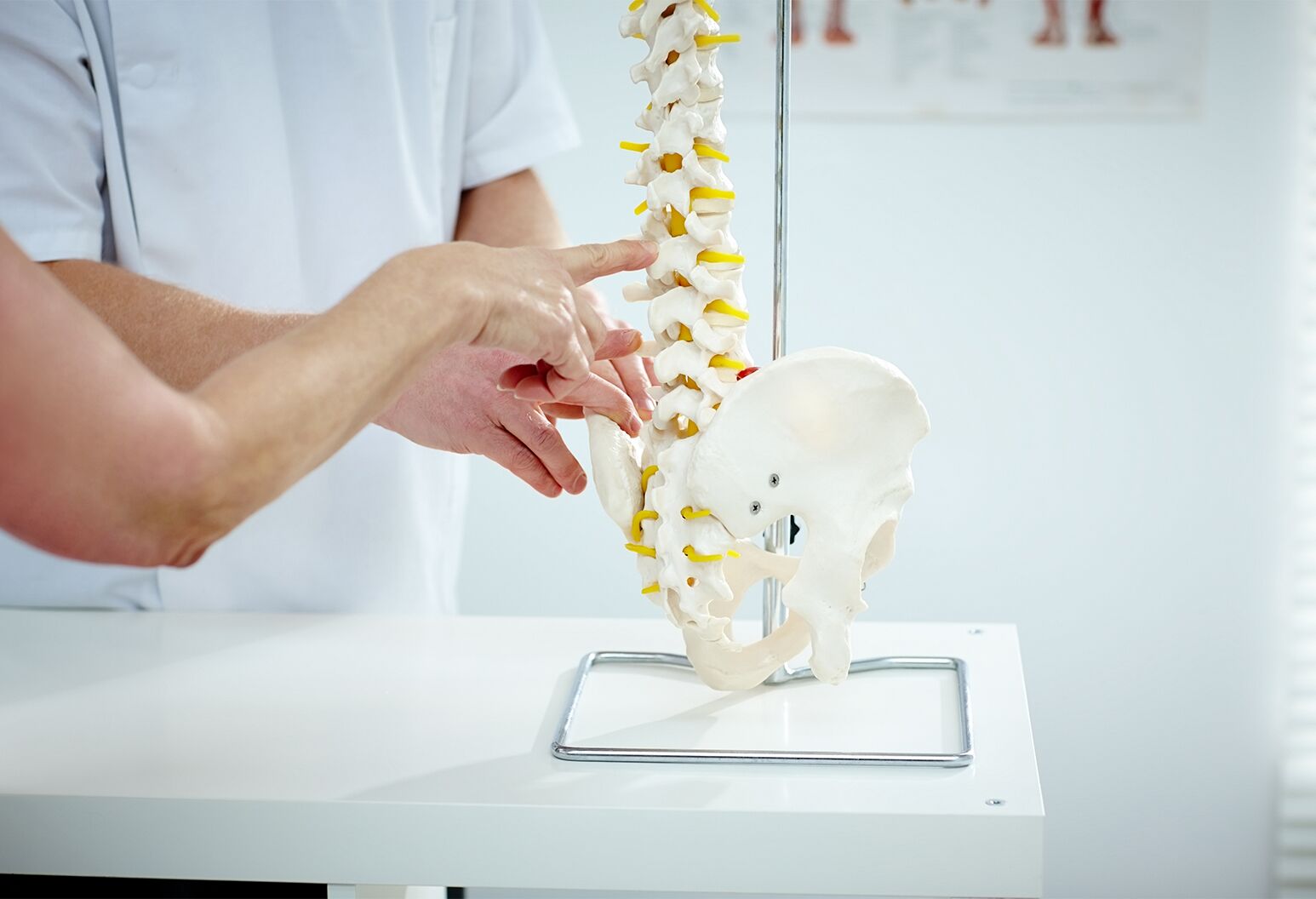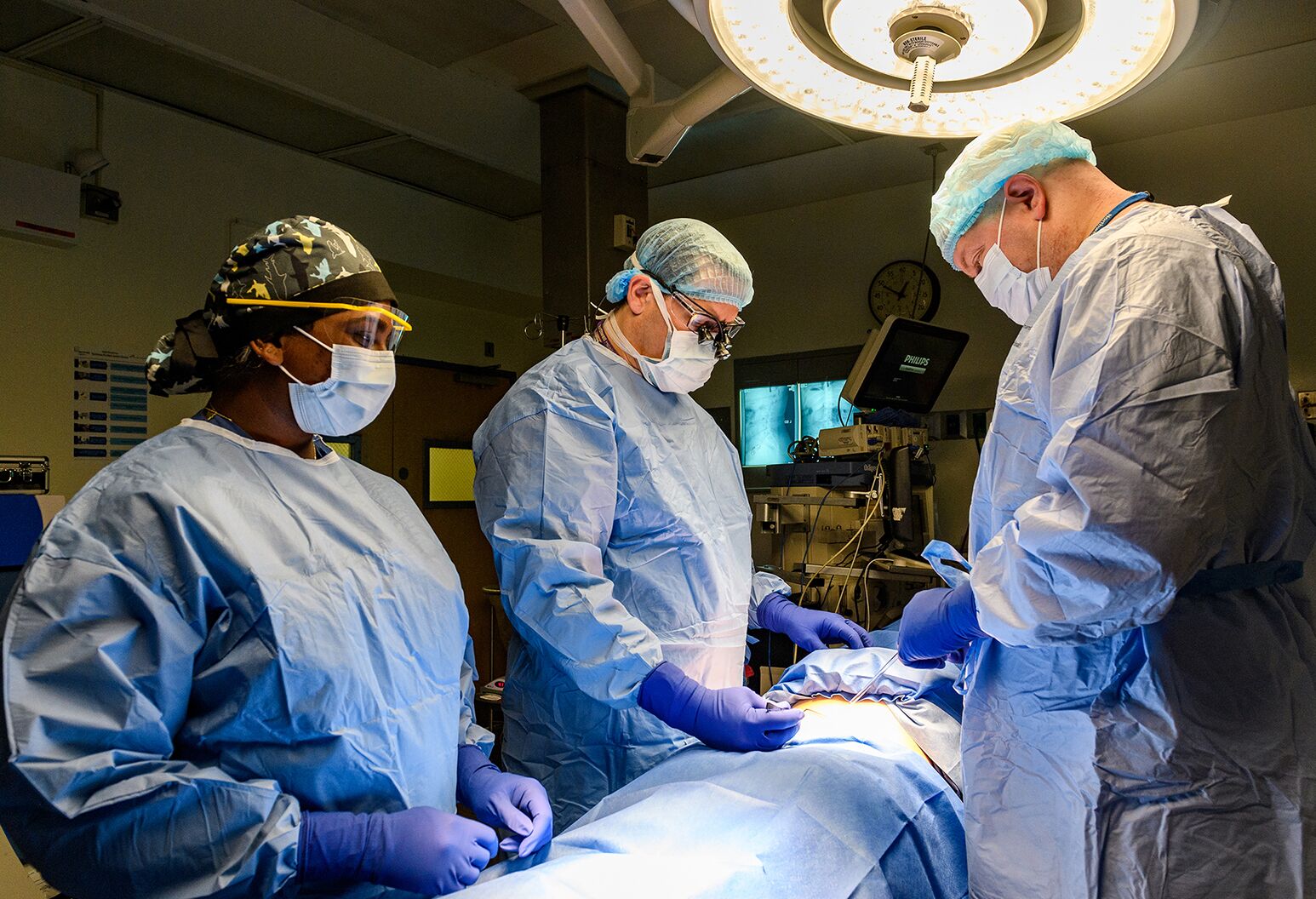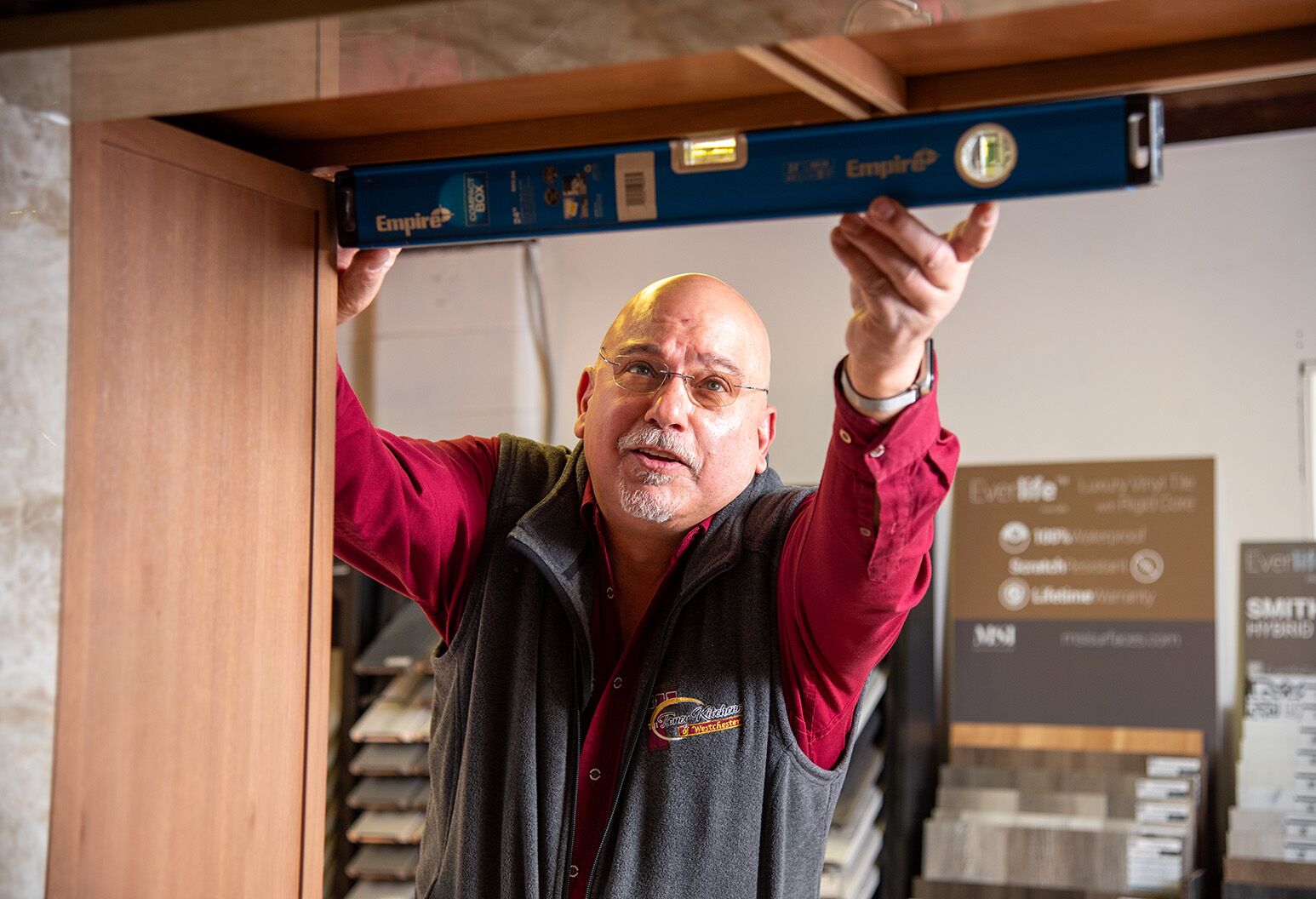Insights
Building better care for degenerative spine disorders and chordoma

Northwell's two-pronged approach to spine care features programs for one of the most common causes of emergency care — degenerative spine disorders and a rare spinal tumor — chordoma
Neurosurgeon Daniel Sciubba, MD, MBA, doesn’t believe in sticking to the status quo. When he joined Northwell Health three years ago, he wanted to help build something remarkable: a world-class destination for people in need of spine surgery, whether they suffer from a common problem or one of the most unusual, dangerous and difficult-to-treat conditions that doctors can encounter.
So the senior vice president and co-director of Northwell Health’s Institute for Neurology and Neurosurgery set his sights on developing and expanding two signature programs. One targeted degenerative spine disorders, the so-called bread and butter back problems that affect nearly half of American adults 45 and older and represent one of the most common reasons they seek emergency care. The other? It was focused on a spinal tumor known as a chordoma — a rare but insidious problem only a handful of U.S. institutions are equipped to cure.
Dr. Sciubba knew that each program would help drive the other forward. Northwell’s long-established spine expertise — which includes specialists in orthopedics, pain management and physical therapy, among others — already made it top of mind for specialists in the field. And developing the highly specialized chordoma program would have a “halo effect,” drawing additional stellar talent to the health system. Together, they’d ensure that Northwell would continue to grow its ability to provide standout treatment for the full range of spine problems.
“Northwell has always been a great medical system, and as we recruit program-builders, it only makes others want to come,” says Dr. Sciubba, who is the Lucille & Milton Cohn Professor & Chair of Neurosurgery. “People see growth, and it’s exciting.”
Chordoma surgery: high risk, high reward
Most people have never heard of chordoma, which affects about one in a million Americans — but it’s well-known among experts as an incredibly demanding and difficult problem. The cause of the cancer, which can develop anywhere along the spine, is a mystery in most cases. It responds poorly to chemotherapy or radiation; the only durable solution is surgery. Yet operating is difficult, because the tumor grows next to critical structures, like the brainstem, spinal cord and essential nerves and arteries. Studies have shown that the best way to treat it — the only approach that offers the chance of a cure — is with something called “en bloc” surgery, a difficult procedure in which surgeons remove the chordoma in its entirety without rupturing the capsule enveloping it.
“There are certain tumors you don’t want to spill, because they’ll immediately grow in that new area,” Dr. Sciubba explains. “It’s like blowing a dandelion in your yard — soon you’ll have dandelions all over the place."
The challenging and high-stakes treatment is inherently collaborative; identifying the best surgical approach and reconstructing the spine afterward requires much more than a single neurosurgeon. A multidisciplinary team is needed — one that includes pathologists, plastic surgeons, medical and radiation oncologists and trauma specialists.
Northwell’s chordoma program has quickly become a magnet offering: About two-thirds of the five dozen chordoma patients Dr. Sciubba treats each year travel here from other states or countries. That’s because Northwell is one of only five institutions nationwide that treat this particularly lethal type of spinal tumor.
“Taking someone through a heroic surgery like this is a huge effort,” Dr. Sciubba says. “Most centers don’t have all those pieces.”
Dealing with degenerative spine disorders
That spirit of collaboration is baked into Northwell’s approach to more common spine conditions, which range from severe back and neck pain to herniated discs, scoliosis, spinal stenosis, sciatica and more.
Whether they’re discussing a patient’s tumor status, interpreting imaging test results or managing pain levels, neurosurgeons and orthopedic spine specialists at North Shore University Hospital and Long Island Jewish (LIJ) Medical Center stay in constant communication — most operate at both hospitals. Unlike at some institutions, the atmosphere is collegial, not competitive, says Hesham Soliman, MD, a neurosurgeon at LIJ Medical Center.
This rare quality is just one of the factors that explain why The Joint Commission — an independent organization that evaluates and accredits healthcare organizations and programs — selected NSUH and LIJ Medical Center as two of only 14 nationwide Advanced Spine Centers of Excellence.
LIJ Medical Center also boasts top-of-the-line surgical navigation equipment, such as an intraoperative CT scanner. This helps spine specialists plan out intricate procedures involving surgical hardware — the tool makes both open surgeries and minimally invasive ones smoother and safer, and helps patients recover more quickly and with less pain.
“Our technology and our people help explain why our patients tend to be ahead of the curve in terms of mobilizing after surgery and needing fewer opioids for pain relief,” says Dr. Soliman. “They have a head start on recovering.”



